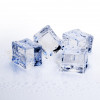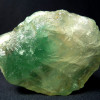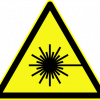RemoveDEBRIS: How to clean up space
Interview with
Space junk is currently a problem and could be an even bigger problem in the future, so the big question is - can we clean up space? There are a few projects worldwide looking into this and one is at Surrey Space Centre, where removeDEBRIS is going to test several technologies for bringing this junk back down to Earth. Aaron Knoll is a researcher at Surrey Space Centre, and Georgia Mills asked him why it’s so tricky to fix this messy problem.
Aaron - It’s a challenge because pieces of space debris are one in space so they’re quite a way away from the surface of the Earth, but the other reason is that they’re moving incredibly fast. So they’re moving on the order of about 7 kilometres every second so actually rendezvousing with a piece of space debri, in and of itself, is an extraordinary challenge, let alone trying to get rid of it.
Georgia - What is Surrey Space Centre trying to do about this?
Aaron - We have a project called “remove debris”, which is aiming to demonstrate technologies for rendezvousing with an uncooperative object (that's a piece of space junk) and then testing various technologies to actually tether or secure ourselves to the object and then, finally, to tow the object out of orbit.
Georgia - So what kinds of things is it going to try and do?
Aaron - It has a couple of different technologies it’s testing in orbit. The first is a harpoon, which sounds rather primitive in technology and, indeed, you can say it is. But what it is is it’s a sharp metal object that penetrates the surface of, let's say, an old dysfunctional satellite and then with barbs it actually hooks onto the surface of that satellite. You have a tether connecting the harpoon to the main mother ship, and then that mother ship can pull it out of orbit.
Georgia - I assume that’s for the larger pieces, what about the smaller ones?
Aaron - We’re also testing something called “net capture”. So we deploy a large net which ensnares smaller objects and, as well as with the harpoon, once you’ve ensnared those objects you would use a tether to drag them out of orbit.
Georgia - I like the way it’s a harpoon and a fishing net that you’ve got here. Cleaning up space junk is basically fishing?
Aaron - Yes. I’ll say the actual technologies were selected based on their reliability. You don’t want to have pieces of technology which are complicated just purely for the sake of being complicated. You want to actually balance what you’re trying to do against the most convenient way of doing it, and it turns out that the net and the harpoon were actually coming up on top in terms of their simplicity and their reliability.
Georgia - Once you harpoon or you net a piece of space junk, how do you get it back to Earth?
Aaron - Once we’ve secured them, we’re testing a de-orbiting sail. This is a 5 x 5 metre sail and it puts a large drag surface area onto the spacecraft so that even the small amount of atmosphere, which is in orbit, will slowly pull the spacecraft on a descending trajectory, and it will burn up in a ball of fire in the Earth’s atmosphere.
Georgia - So where are we with this plan - what’s next?
Aaron - We’ve come a long way on actually developing the technology, so the next phase is to launch it into orbit. I believe that we’ll be launching in the next year or two and then we’ll be able to see whether these technologies actually work.
Georgia - Oh wow! Is the plan in the long run for this technology, is the mother ship going to go along grabbing loads of different bits of space debris? Or is that not possible and will it just have to get one and fall back to Earth because that seems an incredibly expensive way of cleaning up space?
Aaron - So, the long term objectives I think what you’ll see is a mother ship that’s able to rendezvous with multiple objects and then attach to themselves a rocket motor to drag them out of orbit. But then again, it could rendezvous with another object, so then you could have one mission cleaning up multiple pieces of space debris.
Georgia - These are the projects the Space Centre’s working on. Are there any other zany ideas or wacky plans people have come up with to try and sort this problem out?
Aaron - Yes. I’ve heard of a number of different projects. The one that I find particularly interesting is called the “ion beam shepherd.” As opposed to actually securing to the object with a tether and then trying to drag it out of space, this one aims to use an ion beam from a spacecraft at some distance away from the object and push it gently out of orbit. I think that’s quite exciting because eliminating the complexity of actually trying to secure yourself to a tumbling object in space makes the mission much more practical. Also, you could imagine that if you’re pushing an object out of orbit using an ion beam, then you could rendezvous with far more objects because you don’t have to attach to each of them a sail or a rocket motor. So that one struck me as rather clever.
Georgia - Oh wow! So the idea that a spacecraft would aim and fire like pew pew, and all these different bits of space debris would fly out of orbit. So they’d still be in space but they wouldn’t be our problem any more?
Aaron - Yes. So you could push them higher up into higher orbits (what we call graveyard orbits), or you could push them down into the Earth’s atmosphere. Either way you’re clearing the useful areas of space (the lower orbit area), for future space missions.
Georgia - Wow! Very cool ideas. Here’s my idea - why can’t we just use magnets to sweep it all up?
Aaron - Ah yes. This is an interesting one. It’s because magnets actually will have very little effect on a spacecraft. Spacecraft are designed to be what we call “magnetically clean objects.” That means we specially choose the materials so that they have absolutely no ferromagnetic properties. The reason we do that is because if spacecraft were magnetic they would interact with the Earth’s own magnetic field - what we call a compass mode instability. So by making spacecraft very magnetically clean, they can fulfill their mission, Unfortunately, it means that we can’t secure to them with magnets.
Georgia - Ah, so not a great plan then?
Aaron - Maybe not the best.









Comments
Add a comment